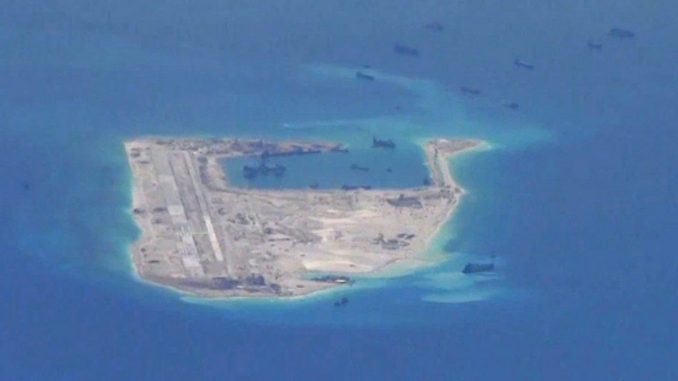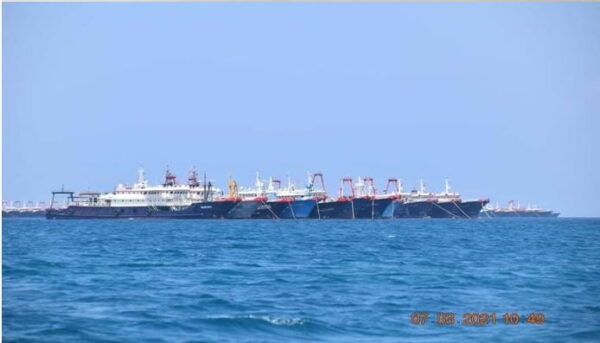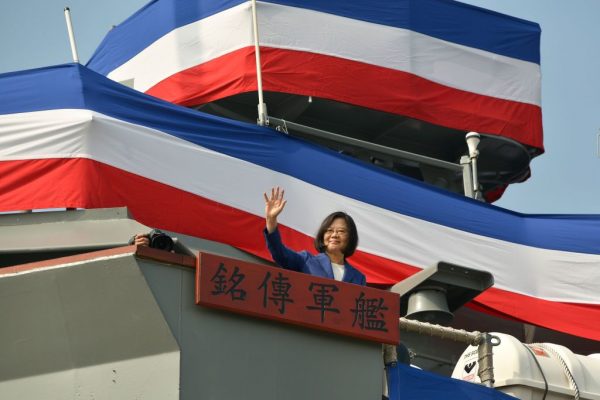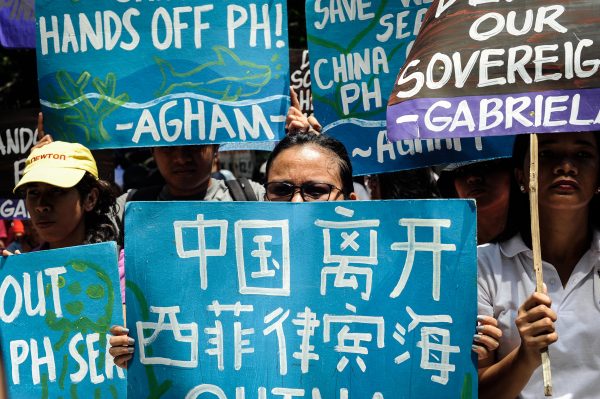
Commentary
China’s sand dredgers have destroyed thousands of square kilometers of ocean floor in order to build sand islands on which they put military runways and docking facilities for submarines and aircraft carriers. The construction of a single such Chinese island, Mischief Reef (5.6 square kilometers) on Philippine maritime territory, impacted 1,200 square kilometers with plumes of sediment that smothered life on the ocean floor. This implies that the approximately 12.9 square kilometers that China created in the exclusive economic zones (EEZ) of the Philippines and Vietnam since 2013 impacted approximately 2,785 square kilometers of ocean floor.
But what did all those dredgers do after they completed the islands? Some of them may now be eating away at the Philippines and Taiwan, if recent reports from the Financial Times (FT) and CNN are any indication.

When the wind is still, a “deep rumbling” can be heard in the Matsu islands of Taiwan, according to a May 27 Financial Times article. The rumbling is from China’s dredgers, illegally taking sand from beneath the waves, and destroying marine habitat in the process. The Taiwan Coast Guard sometimes uses water cannons to expel them. In April alone, the Coast Guard expelled 59 illegal sand dredgers and transport vessels from around Matsu, just 10 kilometers from China’s Fujian Province. The dredgers cut Matsu’s undersea telecommunication cables, including internet, six times in 2020. The 736 residents on Xiju Island lost connectivity each time.
Were the incidents a prelude to an attack from the mainland, or an “accident” caused by neglectful marine authorities in China? Taipei was alarmed, and didn’t know, according to a Taiwanese official who spoke to the FT. Perhaps the incidents served as a test to see what Taiwan would do if they are someday cut on purpose.
One dredger, in a single day, can vacuum enough sand to fill three Olympic swimming pools and sell the haul for $55,000. But the dredging vacuums coral and living creatures too. As a side-effect of the dredging, huge plumes of underwater debris blanket and kill marine life over thousands of square kilometers. The living creatures down the food chain that feed fish are wiped out.
Taiwan’s fishermen suffer, and beaches are receding, according to the FT. A local official said, “Matsu used to be a fishing paradise, with waters brimming with diverse species of fish and shellfish. The dredgers have devastated the marine ecology. Our fishermen now struggle to make a living from the sea.”
Beijing outlaws such environmental destruction near its own shores, pushing dredgers out to neighbors in what Su Tzu-yun at the Institute for National Defense and Security Research in Taiwan calls “grey-zone tactics” and “psychological warfare.” Taiwan’s Coast Guard does not have the capacity to enforce its own laws against Chinese ships. Of the hundreds of Chinese ships in Taiwan waters at the worst point of 2020, the Coast Guard only managed to confiscate two.
Enforcement against Chinese dredgers in Taiwan’s waters poses a dilemma. As explained by a Taiwan politician, “We’re allowing the destruction of our environment if we do nothing. Still, if we respond with military force to crack down on civilian dredgers, then it could give China a pretext to further escalate tensions in the Taiwan Strait.”
Taiwan needs the muscle of the U.S. Coast Guard, backed by the U.S. Navy, if it hopes to stop China’s marine incursions against its outlying islands.

Not content with Taiwan and the approximately 2,785 square kilometers of Philippine and Vietnamese EEZ that China already destroyed to build military bases, China is now allegedly using dredgers on Philippine rivers and coastline, and carting away black sand for use to make iron and steel. It is unclear whether China’s dredgers have legal rights to do so.
According to Chamber of Mines executive director Ronald Recidoro, “Lumalabas na [It appears] the contractor is helping by dredging the river, pero bakit kina-cart out yung buhangin? [but why does the contractor cart out black sand?] When you dredge, you just put it aside.” He noted that currently Manila has no oversight function on magnetite black sand mining.
China’s black sand mining, according to a lawmaker from the Ilocos region, is “massive” on the Philippine coast of the South China Sea. China’s miners are using “heavy” equipment to extract the mineral, and “barges” to ship it out of the country. The lawmaker claims that the Luzon shoreline is receding as a result.
The Philippine lawmakers want to respond with a ban on the export of raw black sand in order to support pre-processing in the Philippines that would create local jobs.
President Rodrigo Duterte’s Department of Trade and Industry pointed out that such limitations could violate World Trade Organization (WTO) rules. This indicates a need for WTO rule exceptions for strategic industries like steel, local job creation, and against aggressive countries such as China. The apparent Duterte administration acquiescence to China’s locally-destructive mining indicates that his administration is far too accommodating of China given its threat of war against the Philippines. Such appeasement might be explained by China’s alleged corruption of the President through business deals involving his close associates.

The Philippine people must vote Duterte out of office if they want to retake control of their sovereignty from Beijing. And, the Philippine Coast Guard, backed by the U.S. Coast Guard and U.S. Navy if necessary, should expel China’s illegal occupation and dredging of Philippine maritime territory. The same goes for China’s incursions against Vietnam and Taiwan’s fishing industry and beaches.
Confronting Beijing is admittedly risky, but no less is required to stop the regime from continuing its expansion. Bullying doesn’t stop until someone stands up against the bully.
Anders Corr has a BA/MA in political science from Yale University (2001) and a Ph.D. in government from Harvard University (2008). He is a Principal at Corr Analytics Inc., Publisher of the Journal of Political Risk, and has conducted extensive research in North America, Europe, and Asia. He authored “The Concentration of Power” (forthcoming 2021) and “No Trespassing,” and edited “Great Powers, Grand Strategies.”






Be the first to comment